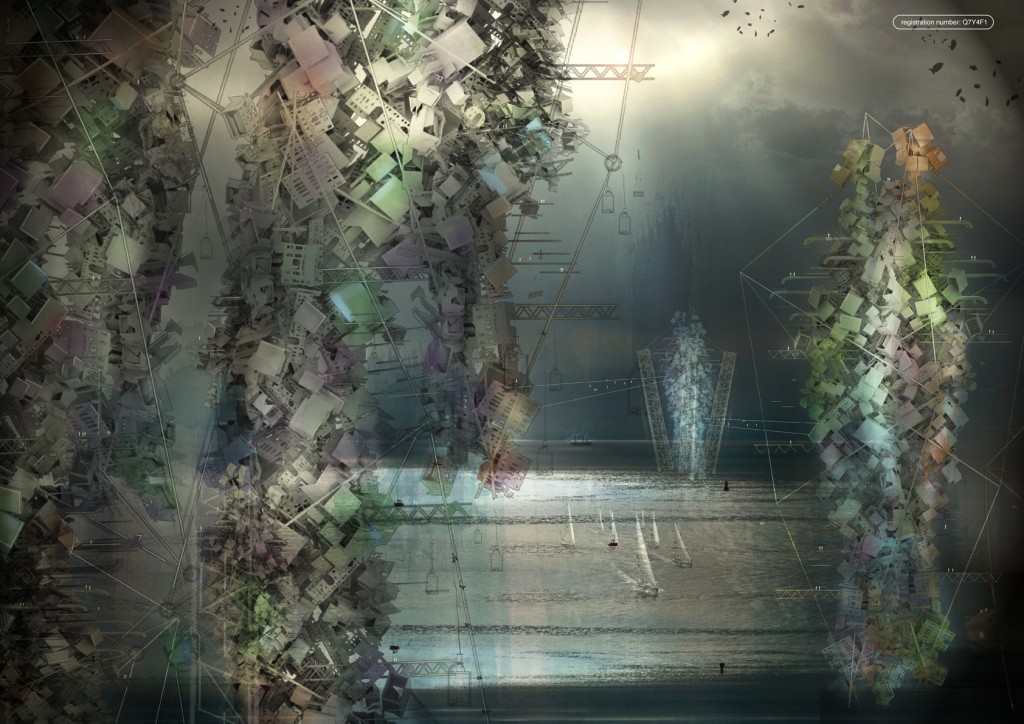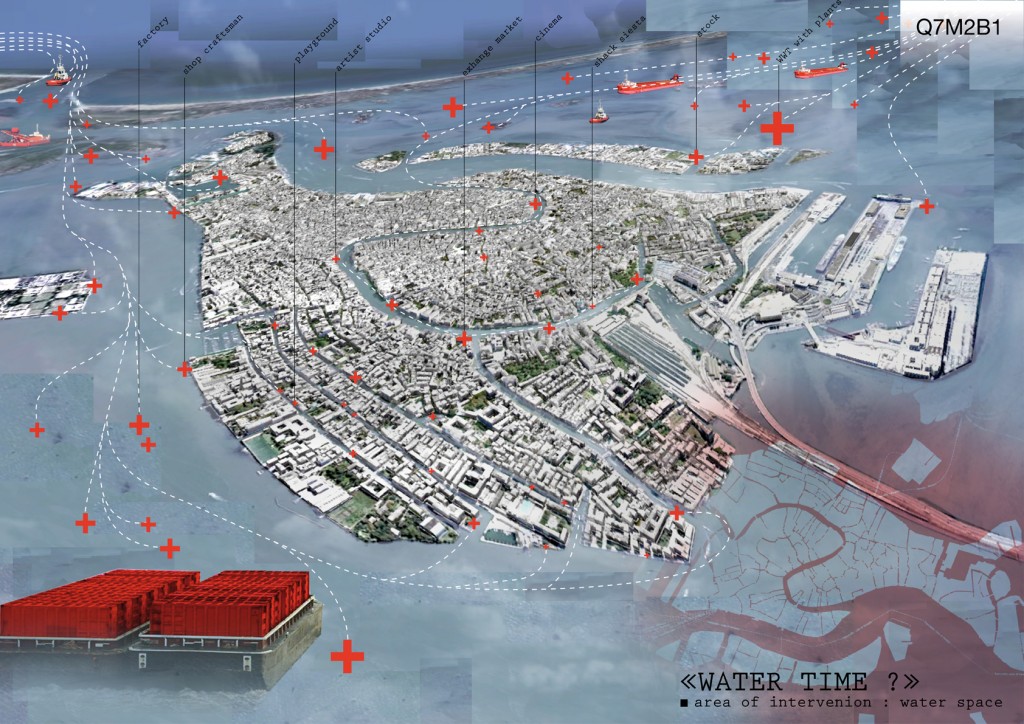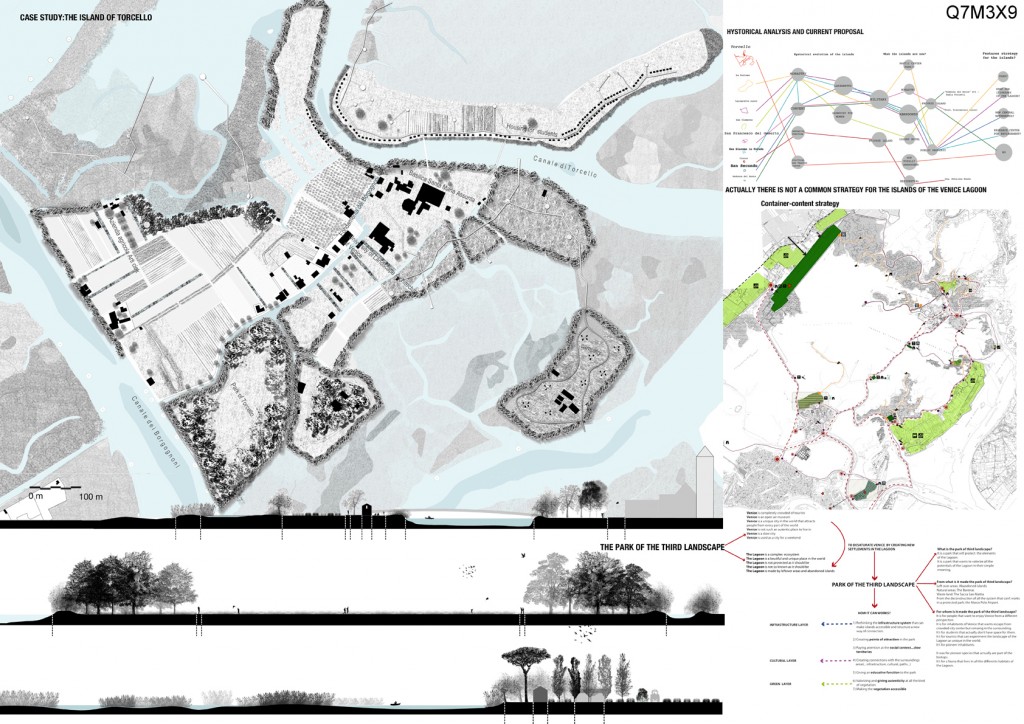Info:
Title: The archipelago of the third landscape in the Venice Lagoon - Code: Q7M3X9Contest: Venice / 2011
By: S. Serafino
Views: 6218 Likes: 1
Votes:
BJARKE INGELS11 NERI OXMAN7 ELENA MANFERDINI4 MARIA LUDOVICA TRAMONTIN6 BOSTJAN VUGA46.4
The archipelago of the third landscape in the Venice Lagoon
The city of Venice is an open air museum. It is the only city in the world capable of attracting tourists all over the year, who dream to go there at least once in life before it sinks. The city of Venice is an important historical heritage in a specific environmental context: the Lagoon is a unique place where a sea and a lagoon ecosystem cohabit. Venice works as a touristic magnet with the the lagoon as its hinterland.
Erick Fischer, in his collection of world city maps, shows Venice city area as completely saturated with people. The touristic system which revolves around Venice, the Lido and the islands of Murano and Burano have completely emptied the city of its authenticity. On the other hand the Lagoon, which is a protected natural area, dwells two main infrastructural spots such as the Marco Polo International Airport and the Marghera Harbour, which cause big trouble to the natural environment.
The archipelago of the third landscape in the Lagoon of Venice
Living the dieing landscape
The archipelago of the third landscape is a park that involves, protects and reactivates all abandoned islands in the north central Lagoon of Venice. The small islands in the lagoon share a common history. They were firstly inhabited as hermitages by religious communities. Around 1500 AD they were turned into places of exile for denigrated people. Eventually, during the Habsburg Empire, they were transformed into military warehouses.
At the moment the City of Venice isn’t carrying out any common strategy to reactivate them.
The islands have a significant environmental plot in the lagoon because after they were abandoned they started hosting several pioneer species, which after around 50 years turned to be real biotopes. What emerges from an analysis carried on the islands is that the level of abandonment is directly proportional to the vegetal biodiversity. Islands such as Madonna del Monte and San Secondo, completely left to their own destiny, show up a significant biodiversity.
The archipelago of the third landscape is meant to be a park for the few inhabitants of the islands of the lagoon, for new inhabitants to be attracted and for types of alternative tourism. The park of the third landscape wants to reactivate all the islands of the lagoon through a container-content strategy.
CONTAINER-CONTENT STRATEGY
To make every island work as a key point in the Lagoon of Venice it is necessary to shape around them a cultural activation project, a rethinking of the infrastructure in the lagoon and an environmental enhancement based on slow territories.
Cultural initiatives will reactivate the islands involving them in events such as the Venice Biennale and the Mostra del Cinema. Exhibition pavilions will be placed in both the Certosa Island and the former area of the airport, which will be dismantled and transformed into a park. Besides working as a secondary access to the city next to the Ponte della Libertà this park will connect the venetian countryside to the lagoon through bicycle and pedestrian paths, thus promoting some prominent agricultural and cultural values of the territory which are currently hidden by the city of Venice.
The infrastructural system introduces a new mobility system based on an electric-oriented boat sharing, which allows both residents and tourists to reach the islands in whatever moment of the day.
Each island has its own feature in the Lagoon. Some islands are just a ruin in which vegetation grows on it. What is really remarkable in the perception of the Lagoon is its own skyline, that permits to recognize each island for its own aspect on the water of the Lagoon.
In the park of the third landscape, series of paths and walkways in different habitats, allowing people to experience the landscape.
The case study of Torcello island is a design example in which small interventions of reactivation are made to enjoy the different parts in which the island is divided: the northern part of fresh water and the southern part of salty water. Two different types of water means two completely different types of vegetation. The northern part is characterized by high vegetation of Phragmites australis and the southern part is just algae. Pathways run along different vegetation.
New forms of habitat are also involved in the program, as housing for students, because Torcello will be the seat of the University of Landscape Architecture. The old houses of fishers will be all transformed into houses for students.
Info:
Title: The archipelago of the third landscape in the Venice Lagoon
Time: 6 giugno 2011
Category: Venice
Views: 6218 Likes: 1
Tags: Adriatic Sea , Burano , Murano , New York City , Scripps Institution of Oceanography , Serafino , Torcello , Venetian Lagoon , Venice








